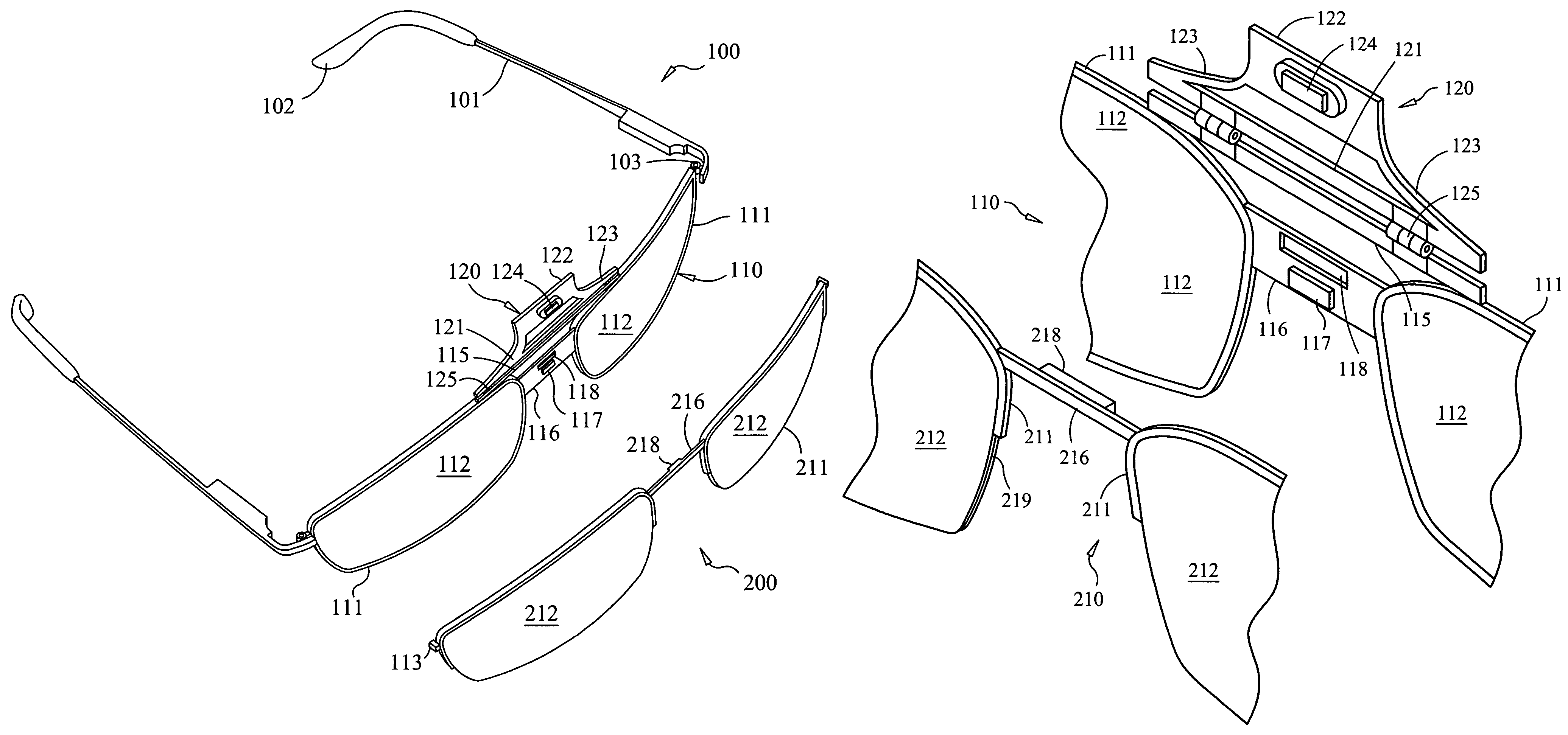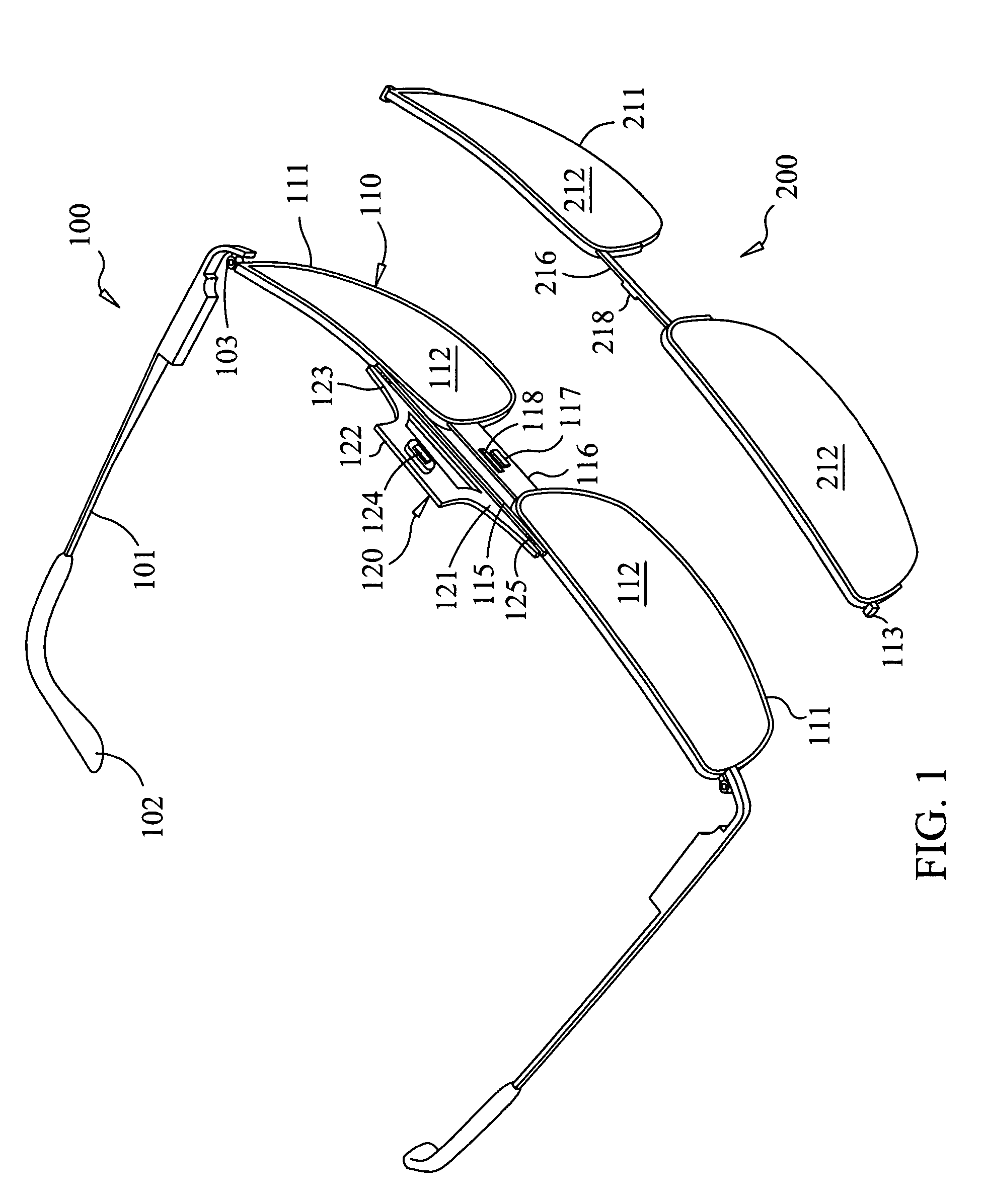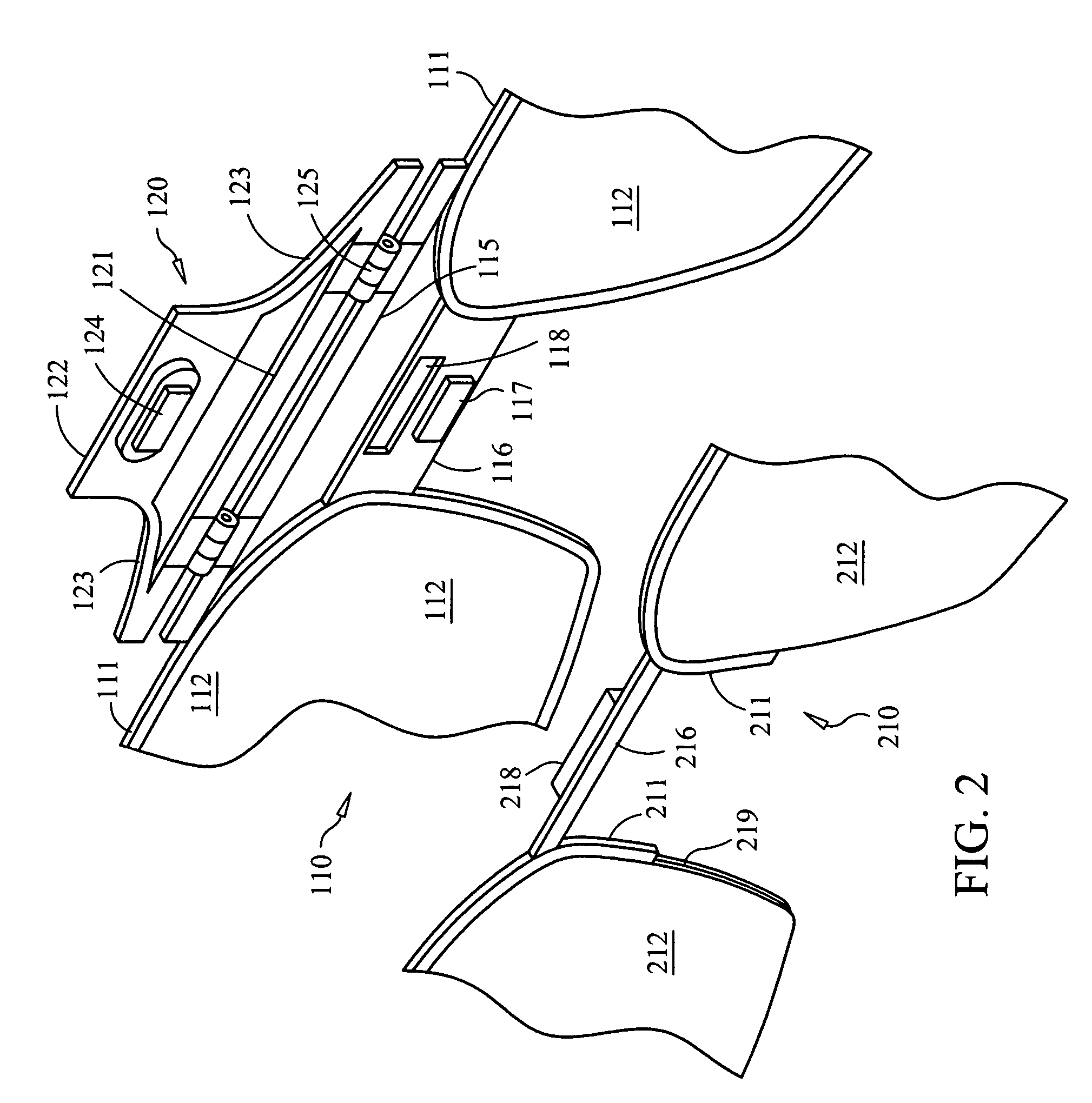Eyeframe with interchangeable lenspieces held by magnetic closure and interchangeable lens system
a technology of interchangeable lenses and eye frames, which is applied in the field of eyeglasses with, can solve the problems of cumbersome and difficult insertion and removal of lenses, high manufacturing cost, and high cos
- Summary
- Abstract
- Description
- Claims
- Application Information
AI Technical Summary
Benefits of technology
Problems solved by technology
Method used
Image
Examples
Embodiment Construction
[0062]Referring now to the figures of the drawing in detail and first, particularly, to FIG. 1 thereof, there is seen an eyeframe that is generally marked with reference number 100. Like most eyeframes, the eyeframe 100 includes two stems 101. Each stem 101 has an earpad 102. Each stem 101 connects to a common rimwire 110 at a stem hinge 103.
[0063]The rimwire 110 is the front part of the eyeframe 100. The rimwire 110 forms two loops, which are lens frames 111. The lens frames 111 roughly overly a wearer's eye sockets when worn. The lens frames 111 are interconnected by a nose bridge 116. The nose bridge 111 overlies a wearer's nose when worn. In the embodiment shown in FIGS. 1-4, a brow bridge 115 additionally interconnects the lens frames 111 and is disposed parallel to the nose bridge 116. The brow bridge 115 overlies a wearer's brow ridge when worn.
[0064]The embodiment shown has two primary lenses 112, each held within a respective lens frame 111. The primary lenses 112 that are ...
PUM
 Login to View More
Login to View More Abstract
Description
Claims
Application Information
 Login to View More
Login to View More - R&D
- Intellectual Property
- Life Sciences
- Materials
- Tech Scout
- Unparalleled Data Quality
- Higher Quality Content
- 60% Fewer Hallucinations
Browse by: Latest US Patents, China's latest patents, Technical Efficacy Thesaurus, Application Domain, Technology Topic, Popular Technical Reports.
© 2025 PatSnap. All rights reserved.Legal|Privacy policy|Modern Slavery Act Transparency Statement|Sitemap|About US| Contact US: help@patsnap.com



